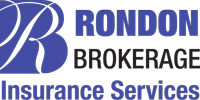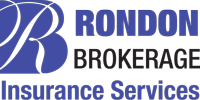The cost of insurance has steadily increased because we are facing a “Hard Market”.
Several factors, such as weather events and inflation, have changed the status of the insurance industry. Insurance premiums are increasing; insurance companies are tightening their underwriting standards, withdrawing from certain lines of insurance, as well as certain geographic areas.
What is a hard market?
Hard market is the term used to define a period in which premiums increase and carriers decrease capacity across multiple lines of insurance. Hard markets are characterized by higher premiums, increased demand for insurance coverage, fewer options to consumers, and reduced willingness for insurance companies to compete for business. When the market hardens, insurance companies will attempt to reduce their expenses and exposures in various ways. They file for rate increases or non-renewing policies, for example.
Which factor are contributing to the hardening of the market?
The current market condition is the result of the confluence of several factors. According to experts in the field, the primary factors are the Covid-19 pandemic, increased interest rates, major weather events, and social inflation.
The ongoing Covid-19 pandemic has been the persistent, underlying, long-term factor shaping the hard market. It extended the period of near to 0% interest rates for several quarters. Pandemic containment and mitigation measures resulted in production shortages, higher demand for consumer products, and inflation.
Another factor is the increase of interest rates. The U.S. Federal Reserve has increased the interest rates over the last year leading to a drop in investment returns. Consequently, insurance companies tightened their underwriting guidelines, filed for higher rates and withdraw from certain areas.
Frequent major weather events such as more frequent hurricanes, floods, and wildfires, are resulting in more insurance claims, higher cost claims, and overwhelming adjuster workloads. According to The Insurance Information Institute, wildfires, droughts, heatwaves accounted for $20.36 billion economic losses and $8.69 billion in insurance losses in 2021.
Social inflation is the term used to define the increasing cost of liability claims. Various legal and cultural trends are driving more and bigger lawsuits. Attorneys, for example, are more often using social media, analytics, and marketing to reach large pools of potential plaintiffs. The Insurance Information Institute reported that from 2014 to 2018, the U.S. plaintiff awards had almost doubled in total dollar amounts, with few exceeding $1 billion.
The hard market has brought higher premium rates for almost all policyholders, even if the current risk has not changed. During this time, some insureds have considered decreasing their limits of coverage, removing important coverage features from their policies or increasing their deductibles to reduce cost. However, sacrificing coverage for lower premium is not a wise decision.
How to survive a “hard market”?
Now, more than ever, is the time to implement risk management and safety practices in order to rip the benefits at the time of renewal. Insureds must be proactive with minimizing and controlling risk of losses. Owners of property should update electrical systems to reduce the risk of fire; business owners should review or implement employers handbooks to reduce exposure to lawsuit from their employees, for examples. Also, due to the scarcity of insurance markets, they should avoid cancellations by paying their insurance premiums on time and complying with inspection recommendations.
In general consumers should expect greater underwriting scrutiny and be prepared to provide more information than previously required. We are facing a “Hard Market”. As we go through it, be patient and wait for favorable winds of change.





